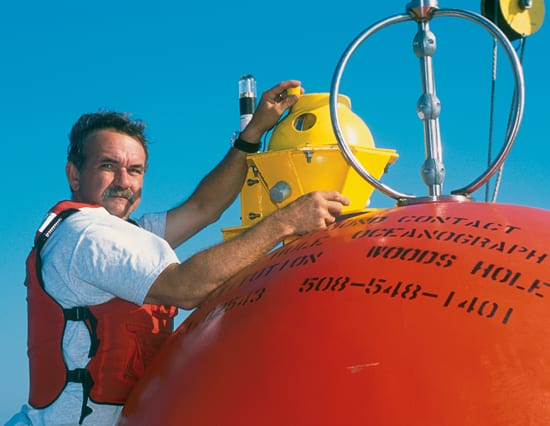Image
Seeing the light
May 27, 2010Prior to deployment, Senior Engineering Assistant Scott Worrilow checks the ARGOS beacon transmitter on a subsurface buoy. The buoy system is deployed with the transmitter in a standby mode that allows researchers about eight hours to get the mooring in the water and the sphere submerged. Deployment is done in the dark. When the transmitter detects daylight the next morning, it turns on and starts transmitting information on the buoy’s position to the ARGOS satellite. This allows researchers to keep track of where the mooring is. These moorings are often set out for one to two years at a time. Storms and rough water can snap the mooring line, allowing the buoy to come to surface and float away. The transmitter alerts researchers when the buoy’s position has changed, allowing them to find and recover it. The mooring systems are used by scientists to better understand climate change.
(Photo by Jim Canavan, Woods Hole Oceanographic Institution)
Image and Visual Licensing
WHOI copyright digital assets (stills and video) contained on this website can be licensed for non-commercial use upon request and approval. Please contact WHOI Digital Assets at images@whoi.edu or (508) 289-2647.

